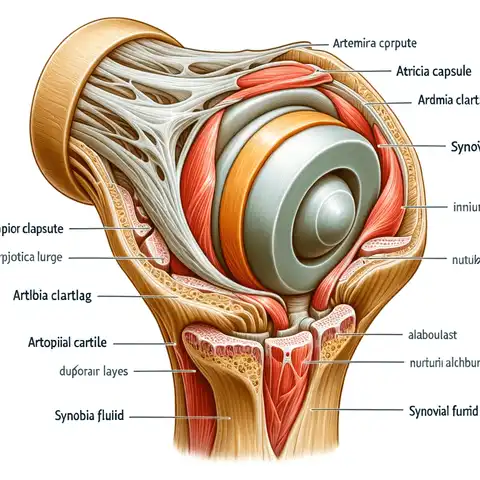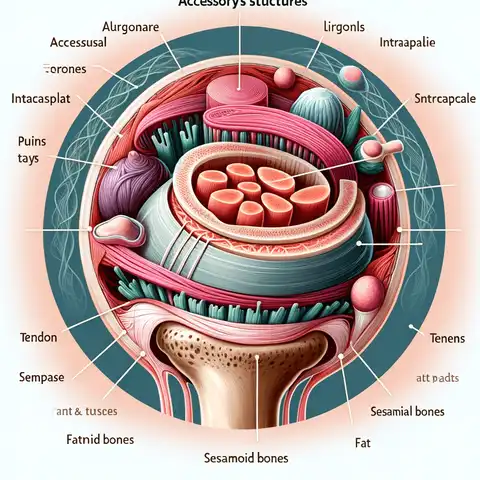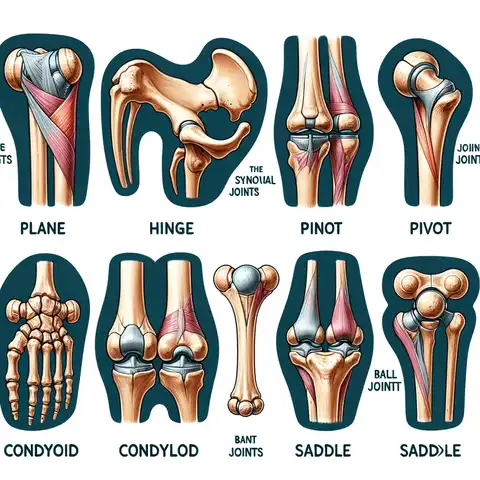Synovial joint label! Hey there! Did you know that your body has some joints called synovial joints? Synovial joints are an important part of our bodies. They let us move in many ways. Think of how you bend your elbow or twist your wrist – that’s thanks to synovial joints! Let’s find out what they are and why they are so important!
What Are Synovial Joints?
Synovial joints are the most common type of joint in your body. These joints are the reason you can run, jump, and even wave hello. They are super important for moving different parts of your body.
What Makes Synovial Joints Special?
- They Have a Special Fluid: Inside these joints, there’s a fluid called synovial fluid. It’s like a super-slippery oil that helps your bones move smoothly without sticking.
- They Have a Strong Covering: Around this fluid is a tough layer called the fibrous capsule. It’s like a bag that holds everything together and keeps your joints safe.
So, synovial joints are like the body’s little superheroes, helping you move in all sorts of ways.
Anatomy of a Synovial Joint Label

Let’s learn about the parts of a synovial joint, which help you move your arms, legs, and other body parts!
The Articular Capsule
- Like a Strong Envelope: The articular capsule wraps around the joint. Think of it like a tough envelope keeping everything inside safe.
- Two Layers:
Outer Layer: This part is strong and holds the joint together. It’s like the tough cover of a book.
Inner Layer: This layer makes something called synovial fluid. It’s really important for the joint.
Articular Cartilage
- Smooth and Slippery: The articular cartilage is on the ends of your bones at the joints. It’s super smooth and lets your bones slide over each other when you move.
- Cushioning Your Movements: Imagine it as a cushion. When you jump or run, it helps absorb the shock, so it doesn’t hurt.
Synovial Fluid
- Thick and Slippery: Inside the joint capsule, there’s synovial fluid. It’s kind of like egg whites – thick and slippery.
- Helps Your Joint Move: This fluid makes sure your joint doesn’t get stuck. It helps everything move smoothly and also brings food to the cartilage and takes away waste.
Working Together
- A Great Team: These three parts – the capsule, cartilage, and fluid – work together like a team. They help your joints move freely without any damage.
- Keeping Joints Happy: The capsule keeps the joint safe, the cartilage makes sure the movements are smooth, and the fluid keeps everything well-oiled and fed.
So, synovial joints are like tiny machines in your body that help you move, play, and do all the fun stuff you love!
Accessory Structures and Their Functions in Synovial Joints

Synovial joints, like the ones in your knees and elbows, have some extra parts that help them work better and stay healthy.
Accessory and Intracapsular Ligaments, Bursae, and Tendons
- Accessory and Intracapsular Ligaments: These are like strong bands that help hold the joint together. They’re inside and around the joint, making sure everything stays in place when you move.
- Bursae: Imagine tiny pillows filled with a special fluid in your joints. These bursae help reduce rubbing when your bones move, so you don’t feel pain.
- Tendons: Tendons are like strong ropes connecting your muscles to your bones. They help you move your joints and keep everything working smoothly.
Fat Pads and Sesamoid Bones
- Fat Pads: These are soft, cushiony parts in your joints. They’re like mini shock absorbers that protect your bones when you jump or run.
- Sesamoid Bones: These are small, round bones that help your muscles move your joints more easily.
All these parts work together like a team in your joints. They make sure you can move, jump, and play without any pain or trouble.
Different Types of Synovial Joints

There are types of these joints, and each one works in a special way:
1. Plane Joints
- How They Move: These joints slide past each other.
- Where to Find Them: In your wrists and ankles.
- Fun Fact: They make your hands and feet move smoothly.
2. Hinge Joints
- How They Move: Like a door opening and closing.
- Where to Find Them: Your elbows and knees have these.
- Fun Fact: They help you bend and straighten your arms and legs.
3. Pivot Joints
- How They Move: One bone spins around another.
- Where to Find Them: In your neck, helping you turn your head.
- Fun Fact: Great for shaking your head ‘no.’
4. Condyloid Joints
- How They Move: They move in different ways, but not in a full circle.
- Where to Find Them: In your fingers.
- Fun Fact: They help you grab things and type.
5. Saddle Joints
- How They Move: They can move back and forth and side to side.
- Where to Find Them: In your thumbs.
- Fun Fact: They give your thumbs a good grip.
6. Ball-and-Socket Joints
- How They Move: These can move in almost any direction.
- Where to Find Them: In your hips and shoulders.
- Fun Fact: They help you swing your arms and legs.
Each type of synovial joint has its own shape and way of moving, which helps your body do all kinds of things.
Nerve Supply and Blood Supply in Synovial Joints
Synovial joints, like the ones in your knees and elbows, need nerves and blood to stay healthy. Let’s learn how they get these and why it’s important.
Nerves in Joints
- Why Nerves Matter: Nerves in your joints send messages to your brain. They tell your brain how your joint is moving or if it hurts.
- Keeping Balance: Nerves help you keep your balance. When you stand or move, they tell your muscles how to keep you steady.
- Hilton’s Law: This is a cool rule. It says the nerves that go to your muscles around a joint also go to the joint and the skin over it. This is why sometimes when your joint hurts, the skin over it might feel funny too.
Blood in Joints
- Feeding the Joint: Blood vessels bring food and oxygen to your joints. They also take away waste. This keeps your joints healthy.
- Gardner’s Observation: This tells us about how muscles help joints. When your muscles move, they make the joint stronger. The nerves and blood vessels work with these muscles to keep your joint safe when you move.
Why This Matters
Just like you need food and water, your joints need nerves and blood to be healthy. This helps you move, play, and do all your favorite things. Knowing about your nerves and blood in your joints can help you understand how amazing your body is!
Clinical Relevance and Health Considerations of Synovial Joints
Synovial joints are amazing because they let us move in all sorts of ways. But sometimes, they can have problems. Let’s learn about a couple of common issues.
Osteoarthritis and Synovial Joints
- What is Osteoarthritis? It’s a kind of arthritis that happens when the cartilage in your joints wears down over time.
- Impact on Joints: When the cartilage gets thin, it can make your joints hurt and be hard to move. This can happen in any joint, but it’s common in the knees, hands, hips, and spine.
- Why It Matters: Understanding osteoarthritis can help you know how to take care of your joints, like by staying active and eating healthy.
Weather-Related Joint Pain
- Joints and Weather: Have you heard someone say they can tell the weather is changing because their joints hurt? There might be a connection between joint pain and changes in the weather.
- Why This Happens: Scientists think it could be because of changes in air pressure, which might affect how your joints feel.
- Staying Comfortable: If your joints hurt when the weather changes, staying warm and moving around can help.
Learning about these issues can help you understand how important your joints are and how to keep them healthy.
By knowing how to care for your synovial joints, you can help prevent problems like pain and stiffness.
Conclusion: Understanding Synovial Joints is Super Important!
Synovial joints are amazing! They let you move, play, and do all sorts of things. It’s important to know about them, so you can keep your body healthy and strong.
- Great for Future Doctors and Nurses: If you want to be a doctor or a nurse, knowing about synovial joints is a must. It helps you understand how our bodies move and how to help people when their joints hurt.
- Awesome for Biology Fans: Anyone who loves learning about living things and how our bodies work will find synovial joints really interesting.
- Useful for Everyone: Even if you don’t want to be a doctor or a biologist, knowing about your joints is good. It can help you keep your body healthy and know what to do if you have joint pain.
Synovial joints are an amazing part of our bodies. They help us run, jump, and even dance! Learning about them is fun and can help us take better care of ourselves. It’s also super important for people who want to help others as health professionals.
To learn more about synovial joints and how they work, you can visit TeachMeAnatomy, Biology LibreTexts, and Physiopedia. These websites have lots of information about the anatomy and health of synovial joints.




